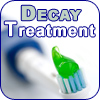| General
Information
Ozone is a naturally occurring component of fresh air.
The ultra-violet rays of the sun reacting with the Earth’s
upper atmosphere can produce it. This creates the protective
ozone layer. It can also be created artificially with
an ozone generator. The ozone molecule contains three
oxygen atoms whereas the oxygen molecule contains only
two.
Ozone is a very reactive and unstable gas with a short
half-life before it reverts back to oxygen.
Ozone is the most powerful and rapid acting oxidizer
man can produce, and will oxidize all bacteria, mould
and yeast spores, organic material and viruses.
A Brief History of Ozone
Ozone has played a significant role in the waste treatment
process in the past and will continue to do so in the
future. The utilization of ozone in industrial situations
has a long and impressive history, one that pre-dates
current environmental concerns. The American Indians,
for whom fishing was a central industry, recognized
a correlation between a successful catch and a strange
odor released by the action of lightning after an electric
storm. On the other side of the globe the ever-astute
Greeks had also noticed the odor (and so defined it
“ozein”) and like the Indians, preferred
fishing after a storm, which is still practiced today.
The explanation for this natural phenomenon is that
after an electric storm the upper layer of water in
lakes is enriched with diluted oxygen and therefore
naturally ozonated. The positive influence of ozone
on the digestive system of different species of fish
has been scientifically documented. The closed loop
for fish farming is only possible with ozone because
of its ability to destroy viruses responsible for many
diseases in fish culture. The most common use of ozone
is for the treatment of water. In 1906 group of scientists
and doctors studied the ozonation system at the Oudshoorn
plant in Holland and later constructed a 19,000 m3/day
(5 mgd) plant using ozonation for disinfection - at
Nice, France. Nice is therefore referred to as “the
birthplace of ozonation for drinking water treatment”.
 |
Formation of Ozone
The formation of oxygen into ozone occurs with the use
of energy. In nature, Ozone is formed during thunderstorms.
In industry, this process is copied by artificially
producing an electric discharge field as in the CD-type
ozone generators (corona discharge -simulation of the
lightning), or by ultraviolet radiation as in UV-type
ozone generators (simulation of the ultra-violet rays
from the sun). In addition to these commercial methods,
ozone may also be made through electrolytic and chemical
reactions.
 |
Ozone And Its Applications
Ozone is not only a very powerful oxidizing agent but
also a very powerful non-chemical disinfectant.
It has the unique feature of decomposing to a harmless
nontoxic environmentally safe material, namely oxygen.
In Europe, ozone is used for many purposes: color removal,
taste and odor removal, turbidity reduction, organics
removal, micro flocculation, iron and manganese oxidation,
and most commonly, bacterial disinfection and
viral inactivation.
Most of these applications are based on ozone’s
high oxidizing power. Ozone can be introduced at different
points in the water treatment process, depending on
its intended application. Ozonation is recognized
as a preferred method of virus inactivation rather then
just an alternative to the use of chlorine for disinfection.
Water or airborne bacteria and viruses cause Nine out
of ten diseases, including the common cold and the flu.
Like chlorine, ozone kills microorganisms. The sterilization
action of ozone is by “direct kill attack”
and oxidation of the biological material. The
rate of bacteria killed by Ozone is 3500 times faster
than with chlorine. Virus destruction with ozone is
instantaneous, safe and foolproof, as ozone
is nature’s own purifier. Chlorine’s reactive
oxidant is hypochloric acid, which is formed when chlorine
is dissolved in water. This powerful oxidant will have
significant long-term negative effects on our water
sources. Ozone, on the other hand, has no side
effects as far as the treatment of water is concerned.
It has properly been described as the “add-nothing”
sterilant.
In Eastern Canada, there are approximately 100 ozone
plants for the treatment of municipal water, as well
as many large industrial plants for water processing
and wastewater treatment. The principal applications
for ozonation systems (single ozone generators are rarely
sold) are as follows:
Air Treatment, Aquaculture, Bottled
water, Cooling towers, Fish boats, Fish canneries Fish
hatcheries, Hot springs, pools, Industrial waste, Odor
Control, Process water, Pools and Spa, Potable
water, Therapeutic use, Waste water.
There are hundreds of commercial applications and new
emerging applications being developed.
 |
Other Ozone Facts
In 1957, the US Department of Agriculture approved the
use of gaseous ozone for meat storage and disinfection.
In 1982, the FDA affirmed GRAS (Generally Recognized
As Safe) status for ozone specifically for bottled water.
In 1991, the US Environmental Protection Agency confirmed
that ozone is the most effective primary disinfectant
available for drinking water. Today, more than 200 US
drinking water plants use ozonation, and that number
will jump as cities comply with EPA’s forthcoming
standards in 1999, which will require the inactivation
of Crytosporidium, which chlorine doesn’t eradicate.
Now, ozone has been declared safe for use in food processing
by the FDA. The FDA confirmed the affirmation of GRAS
status in June 1997. To attain GRAS affirmation for
ozone for food processing, EPRI followed the FDA’s
guidelines and assembled a panel of six top experts
in food science, nutrition, toxicology and ozone chemistry.
The Institute also undertook an extensive, worldwide
search for scientific and historical documents describing
the use of ozone in food processing. In reviewing these
data, the experts considered ozone’s safety, toxicology,
impact on nutrients, and efficacy in food processing.
The panel members communicated regularly via conference
calls and faxes and convened periodically in Washington,
DC to review their findings. After 15 months of intensive
investigation, they released and signed their assessment,
concluding that “ . . .the available information
supports a GRAS classification of ozone as a sanitizer
or disinfectant for foods when used at levels and by
methods of application consistent with Good Manufacturing
Practices.” This GRAS ruling covers both gaseous
ozone and ozone in water for food processing, storage
and disinfection.”
 |
This report was published in the EPRI Journal
of July/August 1997.
The report goes on to say: “Ozone is widely used
in the pharmaceutical industry to generate the ultra
pure water needed in its manufacturing processes. Typically,
water is purified and transferred to a storage tank
until needed. Ozonation keeps the water free of bacteria,
a critical task, since a number of pharmaceuticals are
made biochemically and the introduction of unwanted
bacteria could result in unwanted chemical compounds.
In an even more established application, the pharmaceutical
industry also uses ozone as an oxidant in its manufacturing
processes. Unlike chlorine, ozone does the job without
leaving behind residuals to disrupt the chemical reactions
underway. It’s also highly selective – that
is, capable of targeting certain functional groups within
a chemical compound without affecting the rest of the
compound.”
The report goes on to list other uses of ozone: as a
soil fumigants; as an aid in agricultural drip irrigation
systems; as a purifier of the high-quality water required
for dialysis in hospitals; in recycling of saltwater
in major aquariums and fish farms; and as a pool disinfectant
at the 1984 Los Angeles and 1996 Atlanta Olympic Games.
 |
|



